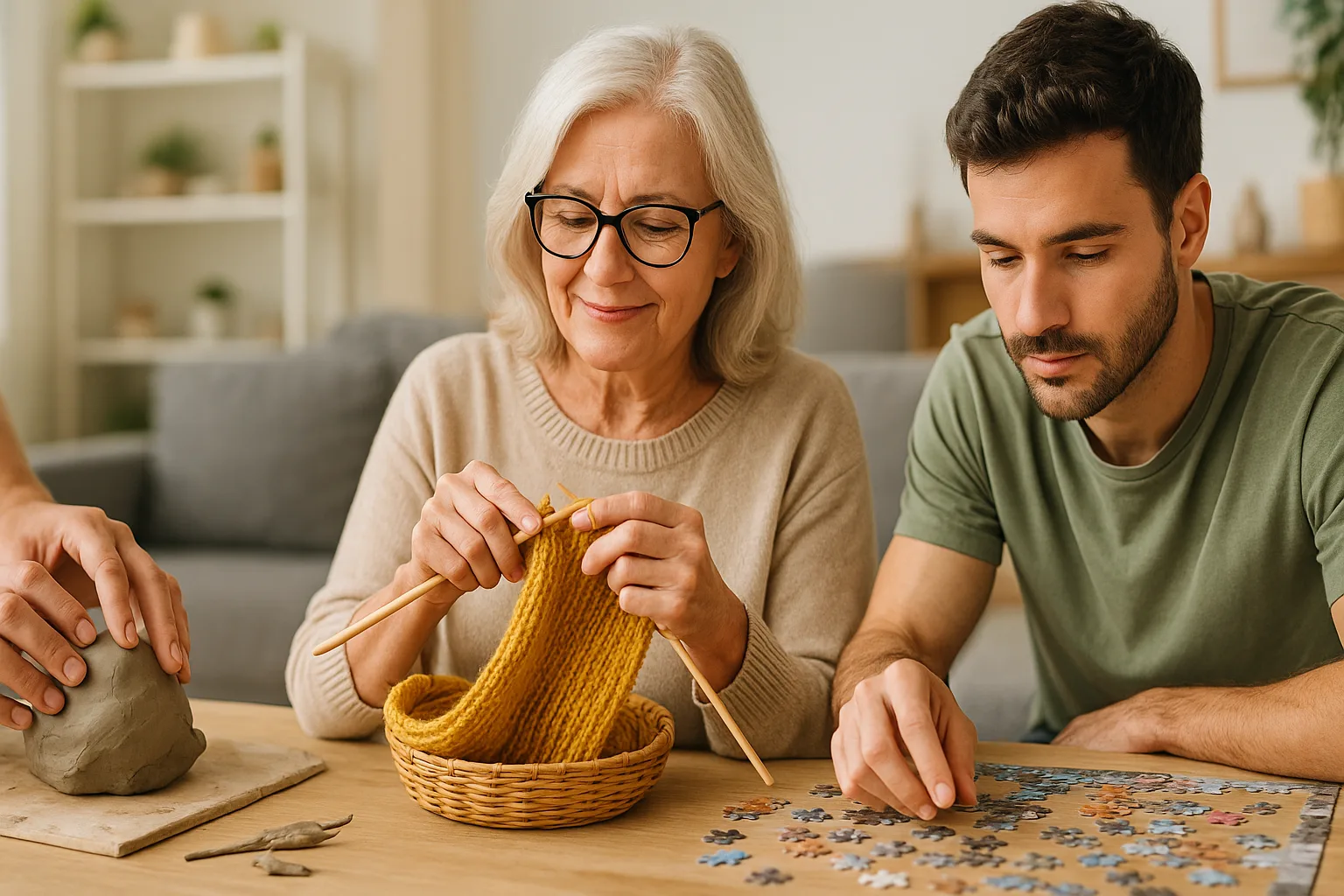
In today’s fast-paced reality, many people seek balance through quiet, repetitive and tangible activities. Mindful hobbies like working with clay, knitting, or solving puzzles are gaining attention not just as leisure pastimes but as practical tools for emotional recovery and mental clarity. As of February 2025, psychologists and occupational therapists increasingly recommend these forms of creative engagement to help mitigate stress and burnout.
Clay Work: The Power of Touch
Modelling clay stimulates the sense of touch, grounding individuals in the present moment. The act of shaping something from nothing with your hands requires full-body focus and slows mental chatter. Unlike digital distractions, clay provides physical feedback that helps regulate emotions and reduce anxiety.
Recent UK-based studies suggest that people who engage in ceramic or clay art for at least 30 minutes a week report improved mood, better sleep and a significant drop in cortisol levels. As a medium, clay is forgiving – mistakes can be reshaped, which teaches resilience and patience.
For those recovering from emotional fatigue or trauma, clay work can also serve as a safe, creative outlet. The repetitive, meditative nature of forming and refining clay provides a gentle rhythm that supports psychological healing and mindfulness.
Why Clay Calms the Mind
Clay encourages intentional breathing and rhythmic motion, both of which are tied to parasympathetic nervous system activation. This naturally reduces the physiological symptoms of stress.
The tactile sensation keeps people present, steering their thoughts away from past worries or future concerns. It becomes an embodied form of meditation.
In many art therapy settings, clay is used not just for artistic expression but also to help individuals reconnect with their bodies after emotional detachment or prolonged anxiety.
Knitting: Repetition That Soothes
Knitting is another hobby that has proven mental health benefits. The process of creating stitches in rhythm offers a predictable and calming effect. This repetition mirrors techniques used in breathing exercises and meditation, making it particularly effective for managing stress.
A 2025 report from the British Journal of Mental Health Crafts highlights knitting as a self-directed, portable activity that reduces symptoms of depression and anxiety. Moreover, it promotes a sense of productivity, even during periods of emotional stagnation.
Knitting also fosters focus. It requires coordination and attention, which can redirect the brain away from negative rumination. The ability to see tangible progress – a growing scarf or completed sleeve – builds motivation and confidence.
The Science Behind Knitting’s Benefits
Each stitch acts as a cue to return to the present. This creates a flow state, similar to what athletes or musicians experience during performance.
The brain’s reward system reacts positively to progress. Watching rows build up provides visual feedback that enhances dopamine release, contributing to overall emotional satisfaction.
Because it can be practised alone or in groups, knitting also encourages social interaction and community, both of which are protective against chronic stress.
Puzzle Solving: Mental Exercise for Calm
Jigsaw puzzles, crosswords and logic games aren’t just for entertainment – they’re cognitive workouts that simultaneously calm the mind. Focusing on problem-solving engages the prefrontal cortex, shifting the brain from reactive stress modes into structured, linear thinking.
According to neurologists at Cambridge Health Institute (2025), puzzles enhance spatial awareness, memory and problem-solving skills. More importantly, they interrupt cycles of worry by demanding full attention and logical sequencing.
Solving puzzles also cultivates patience. As one pieces together complex images or solves intricate clues, the process itself becomes a lesson in persistence and mindfulness – a counterweight to the rapid pace of daily life.
How Puzzles Reduce Mental Noise
When people focus on locating a missing puzzle piece or cracking a clue, the brain’s default mode network – responsible for self-referential thinking – quiets down.
This shift lowers the intensity of internal dialogue and stress-related overthinking. It’s not just mental distraction; it’s purposeful cognitive redirection.
Finishing a puzzle delivers a sense of achievement, which can enhance self-esteem. For those recovering from burnout, even small wins like fitting a corner piece provide meaningful validation.